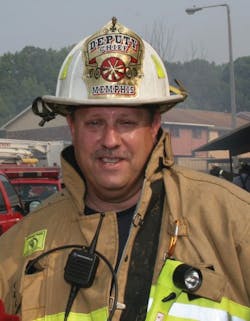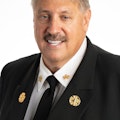Picture this scenario: You work for a small fire department in a small rural community of fewer than 3,000 people. Your closest medical clinic, doctor and hospital are more than 50 miles away. You’re probably a firefighter/paramedic working in a fire department out in the Southwest, Western or upper Midwest of the United States or in Alaska. Transporting patients to the hospital is a major challenge. Even the slightest hint that something is wrong with a patient results in a helicopter being sent to scene and the patient being flown to the appropriate hospital.
You’re probably the highest-qualified medical license for 50 miles in all directions and may even be one of the few paramedics your department has. Transports to the hospital can easily take an hour and returning to your fire station probably takes another hour.
It is estimated that this scenario affects about 75 million Americans where there are already large numbers of elderly, immigrant and poor people. Their healthcare options are limited and a trip to a distant doctor is usually an all-day event. Many of those who travel these far distances many times receive only basic care and many choose to receive no care at all.
For many of these communities, innovative programs are taking shape that will expand the role of paramedics to help provide underserved rural populations in areas where access to a physician and other healthcare is difficult. These are appropriately called community paramedicine programs.
Community paramedicine is an emerging field in which EMTs and paramedics operate in expanded healthcare roles to deliver healthcare to underserved populations in rural communities and areas. This concept has been used in Canada, England and New Zealand.
The medical community in the United States first learned of this concept in 2004, when a document titled “Rural and Frontier EMS Agenda for the Future” was published by the U.S. Department of Health and Human Services (HHS). That document described community paramedicine as a potential structure that may let rural communities switch from what are mainly volunteer EMS agencies to those with some full-time staff based not exclusively on their emergency response, but in a community healthcare role. “Rural and Frontier EMS Agenda for the Future” described community paramedicine as “an organized system of services, based on local need, which are provided by EMTs and paramedics integrated into the local or regional health care system and overseen by emergency and primary care physicians. This not only addresses gaps in primary care services, but enables the presence of EMS personnel for emergency response in low call volume areas by providing routine use of their clinical skills and additional financial support from these non-EMS activities.”
Some of the healthcare that EMTs and paramedics can provide under community paramedicine programs are primary care, public health, disease management, prevention and wellness, mental health and dental care. To prepare EMTs and paramedics for these new and expanded roles, it will be necessary for colleges and universities to develop and teach curriculums to those involved in community paramedicine programs.
In March 2012, HHS Health Resources and Services Administration/Office of Rural Health Policy released a document titled “Community Paramedicine – Evaluation Tool.” The document is mainly a self-assessment tool for a community looking at benchmarks in the community and how the community paramedicine program is achieving healthcare results by using performance indicators. Based on the results, enhancements to the program can be achieved.
The evaluation tool can also be used as a planning aid for communities considering a paramedicine program. The evaluation tool can help communities identify areas that they should concentrate on, such as mental health, diabetes monitoring or blood pressure reduction.
Some reading this may think community paramedicine is the same as advanced paramedics, but it is not. Community paramedicine is mainly designed to provide alternative care and in some cases has reduced transports in a community by more than 50%. It is basically a different way of delivering EMS.
Fire departments are looking at this next step of delivering EMS. In response to the ever-changing environment of EMS, the International Association of Fire Chiefs (IAFC) EMS Section has created a committee, Community Paramedicine, to consider new ways to approach EMS. The committee met for the first time in April 2012. The committee’s goal is to provide insight and updates to members on best practices and ideas on how to implement a community paramedicine program in their fire departments.
It would be best for rural fire departments to look at community paramedicine by using the evaluation tool to determine the feasibility of implementing a program. The function of delivering EMS is a constant and evolving process. The addition of community paramedicine programs in many communities will be another step in the evolutionary process. It will be interesting to see how it all looks in 10 years.
For more news and training on EMS, visit http://EMSWorld.com/.
GARY LUDWIG, MS, EMT-P, a Firehouse® contributing editor, is a deputy fire chief with the Memphis, TN, Fire Department. He is chair of the EMS Section for the International Association of Fire Chiefs (IAFC), was appointed to the National EMS Advisory Council by the U.S. Secretary of Transportation and is a member of the International Association of Fire Fighters (IAFF) EMS Standing Committee. Ludwig has a master’s degree in business and management and is a licensed paramedic. He can be reached at www.garyludwig.com.
About the Author
Gary Ludwig
GARY LUDWIG has served in three fire departments over his career: St. Louis, Memphis, and Champaign, IL. His fire, EMS and rescue career spanned a total of 46 years, and he has been a paramedic for over 44 years. Ludwig served as president of the International Association of Fire Chiefs in 2019-20. He has a Master’s degree in Business and Management, has written over 500 articles for professional fire and EMS publications and is the author of seven books.
Connect with Gary
Email: [email protected]
Facebook: Gary Ludwig
Twitter: @ChiefGaryLudwig
Website: garyludwig.com

